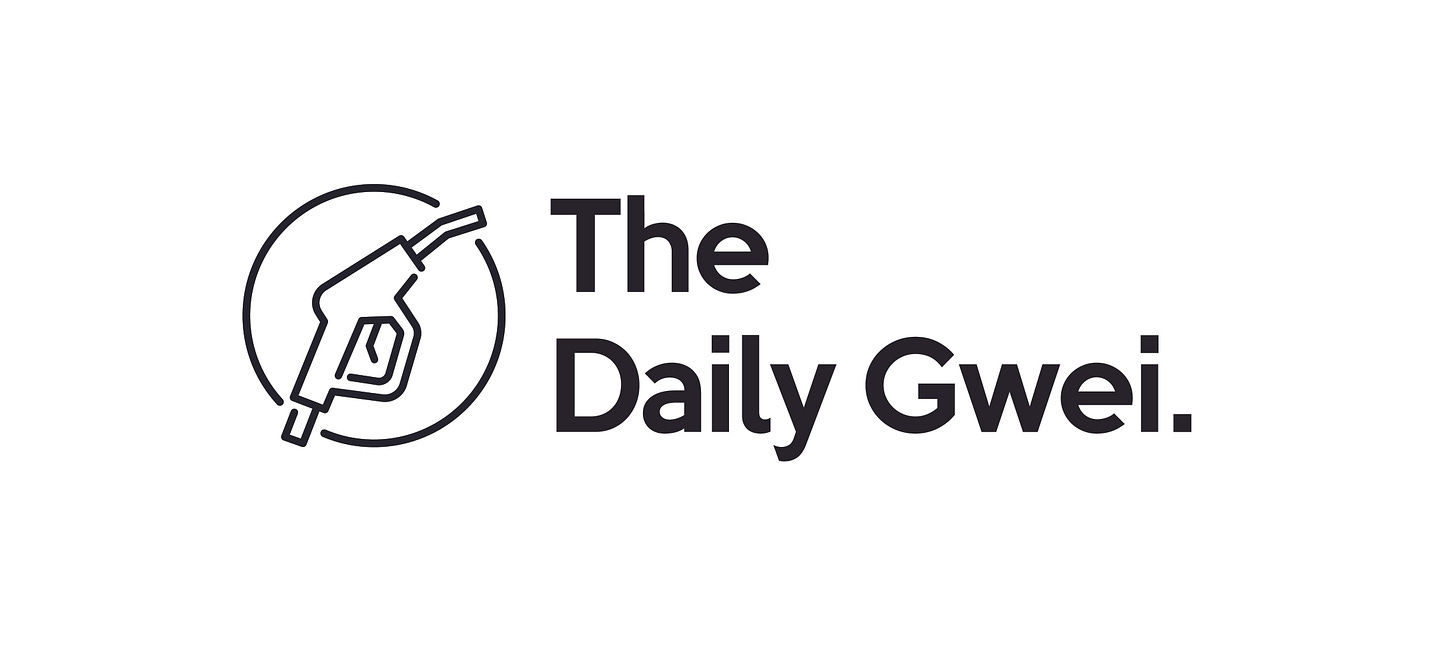The Grand Design - The Daily Gwei #335
Ethereum is being built to be something that we've never seen before.
I’ve mentioned Vitalik’s original rollup-centric roadmap post a few times before though I haven’t ever really dug into why I believe this is the best way to scale a blockchain. Basically, Ethereum is going to scale horizontally at layer 1 via sharding and vertically at layer 2 via rollups (and other similar technologies). These 2 technologies will work in tandem to offer the most scalable, secure and decentralized blockchain that has ever existed.

Put simply, the Ethereum ecosystem is aligned on scaling to the world via layer 2 systems (such as rollups) while keeping layer 1 as secure and decentralized as possible. This means that layer 1 will always have significantly less capacity for executing transactions than layer 2 (even with sharding) but it will in-turn offer incredibly strong settlement guarantees that layer 2’s can leverage for their own security. This way, we keep it easy for users to run validators and full nodes on consumer-level hardware and don’t just devolve the Ethereum network into being run by supernodes in data centers - all while still scaling the network to the world.
One thing that’s important to note about layer 1 and layer 2 is that on the rollup-centric path, Ethereum is aiming to make layer 1 the settlement layer whereas layer 2 will be the execution layer. What this means in plain English is that layer 1 will be where layer 2 proofs/batches are settled (aka secured) and layer 2 will be where transactions are executed. The reason why this works wonders to scale Ethereum is that we take the heavy load off of layer 1 (the computation/execution), push it to layer 2 (off-chain), and then post a “proof” to layer 1 that provides cryptographic guarantees that the execution/computation was completed successfully. In addition to this, in a correctly constructed rollup, users will always be able to withdraw their funds from the bridge contract on layer 1 even if the entire rollup system they were using goes offline forever.
What I find quite wonderful about this rollup-centric design is just how elegantly it will all work in just a few short years. What I think will happen is that layer 2 batch/proof transactions on layer 1 will end up pricing out all other transactions - even whale transactions - this is the tradeoff that must be made in order for layer 1 to stay maximally decentralized and secure. Though in return, layer 1’s blockspace becomes significantly more efficient because layer 2 protocols will seek to minimise their on-chain costs as much as possible. For example, today layer 1 is full of all different kinds of transactions (DeFi, NFT, simple sends etc) that use different amounts of gas and it can be very volatile (such as when there’s an NFT drop happening randomly). In a world where layer 1 is only used for layer 2-related transactions, we can have a much more efficient and orderly settlement layer.
Sharding is a major part of the rollup-centric design but it is not talked about nearly as often because it’s still probably 12-18 months away from going live on mainnet. It’s important to note that “sharding” as a concept fits into 2 categories - data sharding and execution sharding. Data sharding is basically splitting the blockchain into some number of shards and using those shards (effectively creating new chains) as pure data layers - no execution happens on them - whereas execution sharding does both. Ethereum will be prioritizing data sharding because it’s a much simpler design and allows for layer 2’s to leverage the extra blockspace for their proofs/batches. To quantify this - if we assume that Ethereum can offer enough blockspace for an average of 4,500 transactions per second (TPS) today at layer 2 and then 64 shards are added, we can assume that we could get 288,000 TPS (4,500 * 64 shards). Long-term, with more shards and efficiency/tech improvements at layer 1 and layer 2, Ethereum can easily scale to millions of transactions per second - all while not sacrificing its core properties.
Thinking about the next 5 to 10 years of Ethereum development gives me literal goosebumps - we are going to create what is potentially the most decentralized, most secure, most resilient, most scalable and most elegant computing network to ever exist. On top of that, this network will have a very high chance of lasting for centuries (as one of the eth2’s design goals is to prioritize liveness) - our great great great grandchildren may one day be able to do some “chain archaeology” of our on-chain activity!
All of this is to say: I believe the rollup-centric design is the only way to scale a blockchain in a maximally decentralized and secure way to billions of users - and Ethereum is best positioned to take full advantage of this grand design.
Have a great day everyone,
Anthony Sassano
Hey everyone! Just a heads up that if you’d like to support my on-going work to bring you a fresh Ethereum-packed newsletter every week day, feel free to make a donation on Gitcoin here (the donation will be matched quadratically during the current matching round).
Enjoyed today’s piece? I send out a fresh one every week day - be sure to subscribe to receive it in your inbox!




